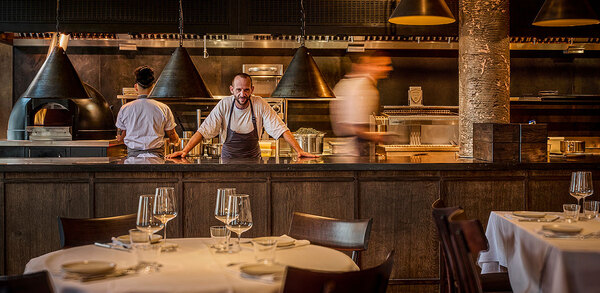Monkfish, Lychees, Mutton
Fresh produce
Savoy cabbages, cavolo nero and late-crop Chantenay carrots are all in great condition. Red onions are relatively plentiful this year.
White and red cabbages are sweet, crisp and reasonably priced and an excellent addition to salads at a time when lettuces are pricy. Chinese leaves, julienned celeriac, carrot, beetroot and mooli are all good salad budget-stretchers, too.
Madagascan and South African lychees have now developed that delicious Muscat grape-like perfume and taste. There are still a few good English Tentation and Russet apples about, and Coxes are getting better as they mature.
The plummeting pound along with continuing cold weather in Spain is continuing to affect supplies. Tomatoes are really difficult to buy, and those that are around taste of little (with the exception of dear but delicious Sicilian cherry vine tomatoes).
Aubergines, Iceberg lettuces and courgettes are all way up in price, and peppers, cucumbers, Cos and other lettuces continue to climb slowly.
The European pear crop was light this autumn, so prices are rising, despite the season having a few months left to run.
Source: 4˚C - 020 8558 9708 - www.4degreesc.com
Fish
Large brill are the bargain of the week, priced at a fantastic £11.50 per kg. Monkfish and lemon sole are both very expensive at present, but there are some nice unseasonal grey mullet being landed, available at sensible prices.
There are continued supplies of gurnard and plenty of line-caught pollack and sea bass. Settled weather means that plenty of langoustines and diver-caught scallops are arriving from Scotland and should continue to do so until Christmas.
The last fish markets will be on 22 and 23 December and, while there will be intermittent supplies of fish between Christmas and New Year, it's advisable to start planning ahead for New Year's Eve menus now.
Source: Chef Direct - 01275 474707
Meat
Mutton is around in good supply now and will continue for the next two to three months. Game supplies are good, with the exception of wild rabbits and ducks, although English partridges are starting to become harder to find.
Geese and bronze turkeys are going fast with Christmas on the horizon, so order quickly while beef is in good quantity, with prices stable, although fillet is sneaking up slightly.
Source: Chef Direct - 01275 474707
Seasonal recipe
Recipe 1
Ingredients (Serves 8-10)
600ml double cream
500ml whole milk
50g glucose
2 vanilla pods, split
200g egg yolk (about 10 eggs)
150g sugar
1 small Christmas pudding (about 200g)
Splash of brandy
Method
Boil cream, milk, glucose and vanilla together. Take off the heat and whisk yolks and sugar until pale.
Add the cream, then put back on the heat and cook until it coats the back of the spoon. Make sure the mixture doesn't boil or the egg will scramble.
Remove from heat and pass. Add small pieces of pudding and a good splash of brandy. Stir, let it cool, then churn and freeze for two hours.
Recipe 2
Ingredients (Serves 4-6)
200g Christmas pudding
500ml double cream
150g soft brown sugar
3 whole eggs
Brandy
Method
Break the pudding into small pieces and toast under a grill, being careful not to burn. The pudding should resemble clusters of breadcrumbs. Whip the cream to form soft peaks and refrigerate for later.
Whisk eggs, sugar and brandy over a very low heat until the volume has tripled and the mixture is warm to touch. Add the egg mixture to the cream and fold in the toasted Christmas pudding. Freeze for two hours, stirring every half-hour to break down the crystals. Remove from the freezer half-an-hour before serving to allow the ice-cream to soften.
Michael Bremner, head chef, Due South, Brighton



















